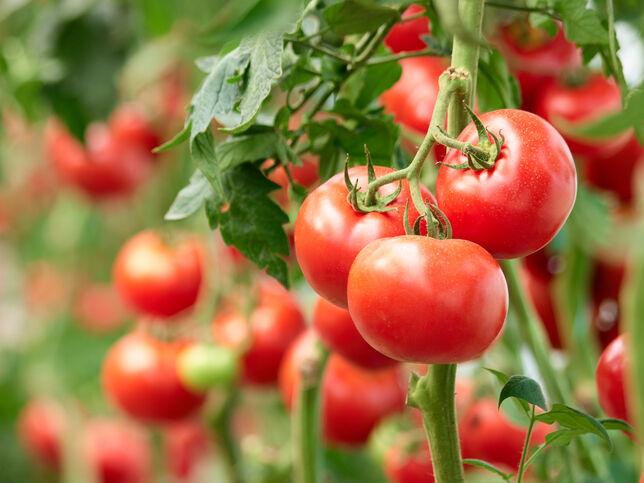
Ken Martin didn’t hesitate to sum up the 2020 growing season for tomato producers.
“A year of extremes,” said Martin, who is the director of agriculture operations for Furmano Foods in Northumberland County.
Martin oversees the 1,800 acres of tomatoes grown for Furmano in Pennsylvania, Maryland and New Jersey. No matter what state the fields were in, there were challenges at every location.
Conditions were extremely dry in central Pennsylvania, and without irrigation the crop was minimal.
In southern Lancaster County, Martin said torrential rains increased the threat of disease. Flooding limited the harvest in Maryland, and heavy rain was a problem in southern New Jersey as well.
To top it all off, a frost on Sept. 19 damaged plants and dashed hopes for an abundant late-season harvest.
“Everything that could go wrong, did,” Martin said. “The later season was looking better, but the frost took some of the yield away.”
Despite the problems, Martin doesn’t think it will cause a price increase for tomatoes grown for processing. Much of that product comes from California.
Still, there is time for a productive late-season tomato crop here, and that was one of the topics during a Sept. 16 webinar hosted by Pasa Sustainable Agriculture.
The key to improving the quality of late-season tomatoes, Martin said, is taking steps to maintain a consistent growing season during times of extreme weather.
“You don’t want to interrupt the crop, and that means things like rain, dry, cold or heat — anything you can do to mitigate all of that,” he said. “The biggest thing is irrigation when it comes to keeping crop quality.”
By reducing stress caused by severe weather events or patterns, tomato plants can best utilize their energy for growth. That’s imperative in the late season when the days are getting shorter, Martin said.
Even so, late-season tomatoes remain a risky venture due to the increasing threat of frost, cool temperatures and declining hours of sunlight. Add it all up and it takes tomatoes longer to ripen in the fall, and that’s why Martin said growers should consider another option for their crop.
“Once you have mature green tomatoes, you can pick them and allow them to ripen in a controlled environment,” he said. “Sometimes it’s not as tasty, but you can extend the season and salvage a crop that way if a frost is coming.”
By focusing on late-season details, growers can produce more marketable fruit in both farm stand and processing settings. While appearance is everything for a farm stand selling fresh tomatoes, Martin said processors gauge their crop on color and fruit firmness.
“In my processing tomatoes, a mark doesn’t impact anything like it does for a fresh market,” he said.
While fall tomatoes can be profitable for growers, marketing can be a challenge.
Peter Nitzsche, an agriculture and natural resources agent with Rutgers Cooperative Extension in New Jersey, said the late season is tough for tomatoes because buying habits change as consumers focus more on pumpkins and apples.
Selling fresh green tomatoes may be a option for some growers.
“There’s always a bit of demand for green tomatoes, and a savvy marketer would be wise to start pushing out recipes now to promote that product for the fall,” he said.
But as is the case across the Northeast, weather continues to be a challenge in North Jersey, where Nitzsche is located.
Some parts of the Garden State fell victim to heavy rain this year. Other growers didn’t have as much precipitation but had to deal with a long period of high humidity.
“That’s bad too because it encourages bacterial and fungal diseases,” Nitzsche said. “I’ve had reports of growers that lost foliage in their plants due to disease.”
What has been a difficult year for tomato growers could soon come to a merciful end. Cold nighttime temperatures have become common, Nitzsche said, which could soon lead to the inevitable killing frost.
“When the temperature drops below 50 degrees, that’s not great for tomato flower,” he said. “We usually anticipate the first frost later in October, but the low temperatures at night are making it challenging right now.”
The Link LonkSeptember 25, 2020 at 07:30AM
https://ift.tt/3j21OpJ
Tomato Growing Gets Tougher in Fall | Main Edition - Lancaster Farming
https://ift.tt/2VAxJ6V
Tomato

No comments:
Post a Comment